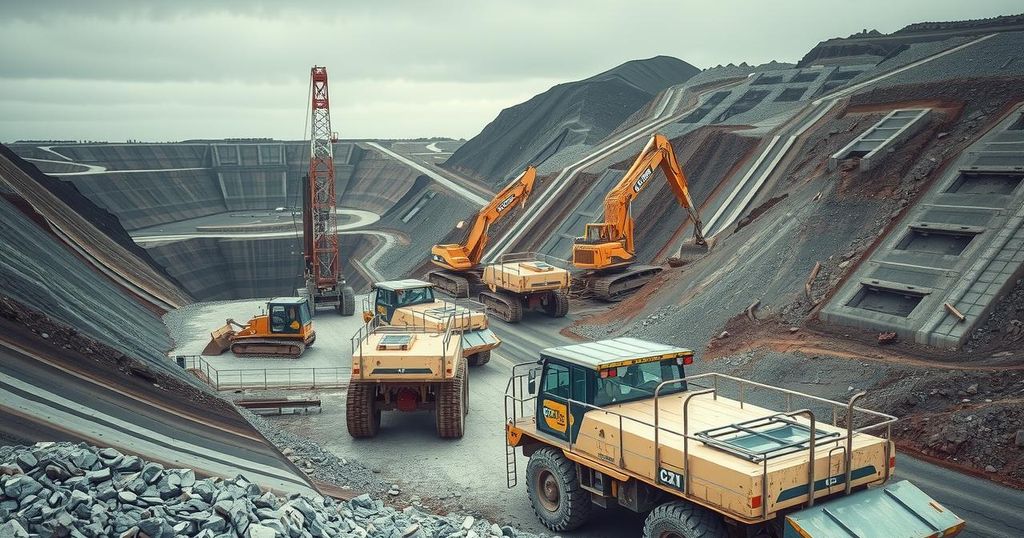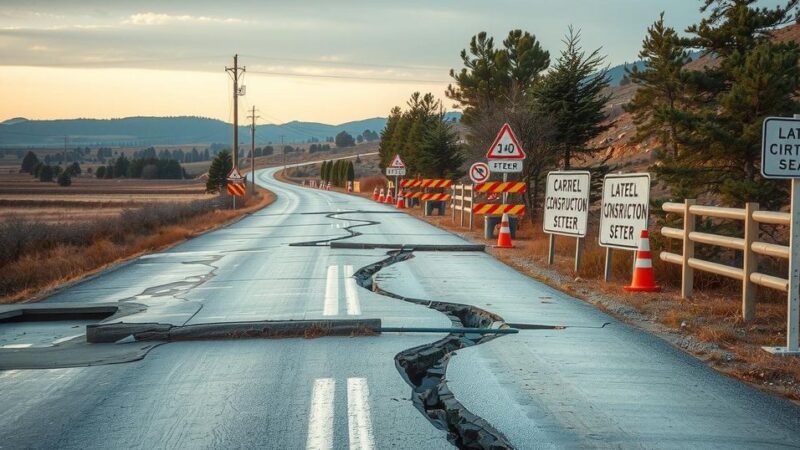Resolute Mining forecasts lower production and higher costs in 2025 due to Mako mine depletion in Senegal and fiscal changes in Mali. With production guidance set for 275,000-300,000 ounces and AISC expected at $1,650-$1,750/oz, the company faces significant financial pressure after recent government policies and executive challenges. The firm remains focused on operational optimization despite these difficulties.
Resolute Mining, an Australia-based gold producer, announced it expects a decrease in production and an increase in operational costs for 2025. This is primarily attributed to the impending depletion of its Mako mine in Senegal and rising expenses related to ongoing fiscal changes in Mali. The company now projects production between 275,000 to 300,000 ounces, with all-in sustaining costs (AISC) anticipated to be between $1,650 and $1,750 per ounce, a notable escalation from 2024’s figures of 340,000 ounces at an AISC of $1,476 per ounce.
The fiscal challenges intensified after Mali’s military government imposed significant tax reforms. In late 2024, the ceo Terry Holohan and other executives were detained due to a tax dispute with the Malian government, only to be released after Resolute consented to a $160 million settlement. As of now, Holohan remains on leave, with an announcement regarding his future with the firm expected soon.
The financial health of Resolute has been adversely impacted, particularly following the final $30 million payment to the Malian government, leaving the company’s cash and gold reserves at a mere $101 million. The new agreement with Mali is projected to increase AISC by approximately $250 per ounce, exacerbating the company’s cost structure due to increased royalties, new foundation payments, and the loss of a fuel tax exemption.
The Malian government has been exerting pressure on international mining firms to comply with a revised mining code that went into effect in 2023, seeking greater contributions. This code entitles the government to preference shares in mining projects and requires an annual community development “foundation payment.” Nonetheless, Resolute remains committed to enhancing operations, having ramped up production at its Syama mine and commenced the second phase of its development, slated to launch in 2025.
Despite the setbacks, Resolute has postponed certain investments such as a $100 million plan to convert its sulphide operations to double processing capacity from 2.4 million tons per annum to 4 million tons. The firm emphasized the optimization of its mine sequencing at Syama to enhance short- to medium-term cash generation while assessing longer-term capital strategies. Concurrently, the company is prioritizing opportunities in Guinea and the Ivory Coast in light of the increasingly fraught political environment in West Africa.
In financial markets, Resolute’s shares closed down 3.6% at 41 Australian cents, leading to a market capitalization of A$862 million ($537 million). The share price has significantly declined since October 2024, reflecting growing concerns regarding the fiscal stability in Mali.
Resolute Mining primarily operates in the gold production sector within West Africa, facing specific challenges due to regulatory and political shifts in key operating regions. Recent governmental actions in Mali, including the detention of executives over a tax dispute, exemplify the volatile environment in which the company operates. As Resolute navigates these complexities, it must manage operational costs while striving to maintain profitability across its mining endeavors.
In summary, Resolute Mining anticipates heightened costs and reduced production in 2025 fueled by fiscal changes in Mali and the nearing depletion of its Mako mine. The company’s adjustments to its guidance and operational strategies highlight ongoing challenges, including significant financial settlements with the Malian government and a focus on optimizing current resources. Future investments are being reconsidered as Resolute seeks to adapt to an increasingly complex political landscape in West Africa.
Original Source: www.mining.com






